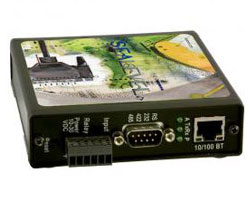Industrial Ethernet: From the Front Office to the Factory Floor
Ethernet networks traditionally connect our workplace environments where laptops and mobile devices are the primary communication tools. Now, Ethernet networks are expanding beyond the office to connect to major monitoring and control systems used in the manufacturing space. Ethernet is an obvious solution for industrial automation applications in part because it is a mature, highly affordable technology. This modern communications capability makes on the fly adjustments to production more than just a futuristic fantasy.
In the not-so-distant future

One of the “big picture” business benefits of industrial Ethernet often touted by analysts and vendors is rapid response—both to market demand and to problems happening during production runs. How might rapid response affect the future of manufacturing?
The rapid transmission of information over TCP/IP from the front office to the factory has the potential to revolutionize the ways in which products get made. Interoperability between product design, workflow systems, and the machines that make and assemble goods will decrease time-to-market. That same capability will increase the number of product variations possible in a manufacturing plant.
Managers will be able to make quicker, more informed decisions thanks to more direct alerts from new remote monitoring capabilities. Near real-time notifications will help plant managers solve problems with minimal downtime and product waste.
When seconds equal big savings or losses
The office network and the industrial Ethernet network may transmit data similarly, but a key difference is in the priority of response times. The stakes are much higher when an automated alert that something is amiss on the factory floor is delayed, compared to the consequences of an email’s showing up after a lag of a few seconds. Out on the line, a missed message may throw off a precisely synchronized, rapid-fire process, resulting in raw material waste or even a complete line stoppage. For this reason, data transfer performance is a critical concern for anyone relying on industrial Ethernet for remote monitoring of manufacturing equipment.
A number of tactics and techniques can make a big difference for industrial automation. For example, network segmentation designed to keep communications efficient helps. Use of subnets within the corporate network makes it possible to ensure communications are as fast as possible. This also reduces the possibility of network traffic collisions, an otherwise common issue for lags in data packet delivery on Ethernet networks.
Connecting legacy equipment
Computer technology and communications standards evolve much faster than other equipment commonly found in factories. Since it would be cost prohibitive to constantly upgrade production equipment, “bridge” devices are required to connect existing interfaces and protocols to Ethernet. A common application is connecting serial peripherals to a facilities’ network, and Sealevel manufacturers Ethernet Serial Servers that make this application easy. These modules offer port counts ranging from 1 to 16 and each port is individually configurable for RS-232, RS-422, or RS-485. COM port redirector software that comes with each unit allows compatibility with existing software. Users simply plug in the serial ports and they appear as standard COM ports on the host PC.
Moving toward wireless
Wireless connectivity is beginning to make significant inroads in industrial applications. Increasing trust in wireless networking reliability and security combined with the perceived ease of implementation, lower installation cost, and ease of maintenance are all important reasons we expect to see the move toward wireless increase in building out industrial Ethernet networks.
Categories:
